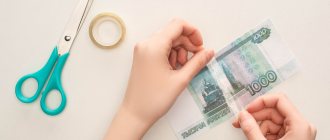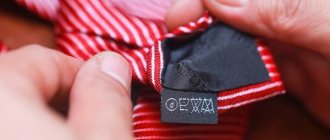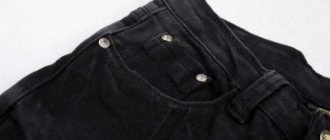What to do with a torn banknote - can it be exchanged at a bank and how to do it correctly. Are shops required to accept torn banknotes?
Paper money tends to wear out and lose strength. Stores often refuse to accept torn bills. The problem becomes especially urgent if a banknote with a denomination of 500 rubles or more has been damaged.
The article will tell you whether torn banknotes are valid, how the degree of damage is determined and how to change a torn bill at Sberbank.
Are stores required to accept torn money?
Banknotes with minor damage are accepted for circulation if it is possible to determine their denomination and authenticity. Stores are required to accept them. The refusing party violates two articles of the Civil Code of the Russian Federation at once - 426 and 445. Unfortunately, in this case no liability is provided. In addition, sellers often refuse to accept such banknotes because they cannot be used in commodity-money transactions. They are required to hand them over along with the proceeds for subsequent exchange.
Stores must accept money if:
- the banknote is missing an edge or corners;
- banknotes have become discolored as a result of washing or prolonged storage in the sun;
- banknotes have stamps, drawings or impressions that do not interfere with identification and determination of their authenticity;
- The Bank of Russia ticket has small punctures, traces of dirt, and greasy stains.
If the buyer is given damaged money at the checkout, he has the right to demand that it be replaced with intact money.
What does the law say about torn banknotes?
According to the instructions of the Bank of Russia “On the signs of solvency and the rules for the exchange of banknotes and coins of the Bank of Russia” dated December 26, 2006, banknotes with minor defects are considered solvent:
- with lost edges, corners;
- dirty, with tears or signs of wear;
- with abrasions, stains, inscriptions, minor punctures.
Does color matter?
We asked experts whether ATMs more often accept counterfeits made from fragments of five thousand and one hundred ruble bills.
After all, their colors are similar. “In my opinion, the graphical diagram is not so important in this matter. If necessary, scammers will bypass this restriction. For example, the area of banknotes in denominations of one hundred and 5 thousand rubles is now different (the width of the sheet of banknotes is different), which does not prevent scammers from making such “glues,” says Alexander Dynin.
“The ATM does not pay attention to the color scheme of the bill. He checks banknotes based on machine-printed features, and not on their “appearance,” explains Elena Loskutova.
“The color scheme and denominations of glued banknotes do not matter, since ATMs, recognizing a counterfeit as a valid bill, react not to color, but to such features as perforation, hologram, magnetic tape,” agrees Elena Mokhnacheva.
“The bill acceptor in modern ATMs is equipped with an optical scanner, ultraviolet and magnetic detector, for which the color of the bills does not play any role,” Roman Bazhin from Digital Security supports the opinion of bankers.
Is it possible to exchange a torn banknote at a bank?
Banknotes with the following defects are subject to exchange:
- with a loss of no more than 45% of the total area;
- glued together from several fragments belonging to one banknote;
- glued together from two fragments of different banknotes of the same denomination;
- defective;
- exposed to fire or aggressive environments, if the banknote can be identified by denomination and authenticity;
- Due to damage, the serial number of the banknote is not readable.
To exchange money, the client will need a passport.
This is interesting:
How to correct your credit history at Sberbank: detailed instructions
Credit history in Sberbank - how to find out online yourself
What difficulties may arise
If the torn money meets all the requirements, there will be no difficulties with the exchange. In some cases, when a bank employee has doubts about the authenticity of a banknote or its condition is extremely unsatisfactory, the money will be sent for examination. If the banknote has been withdrawn from circulation, the bank has the right to refuse exchange.
Important! The banknote exchange service is free for the population.
Does the type of ATM matter?
It is logical to assume that the risk of receiving a counterfeit is higher at an ATM with a cash-in function, which “spins” accepted cash between depositing and withdrawing customers.
However, bankers disagreed on this assumption. If we are talking about an ATM with a broken cash circulation cycle, then a glued banknote can appear in the dispensing cassette only when loaded at the cash center, says Alexander Dynin from Otkritie.
Sberbank plans to purchase 10 thousand ATMs with recycling functions in the next two years. VTB 24 will triple the number of such devices in its ATM network. According to market participants, there are more advantages than disadvantages in introducing devices with a recycling function. However, their installation may lead to an increase in attempts to insert counterfeit banknotes into such ATMs. However, the share of such fraud will be tiny, bankers are sure.
“In the case of ATMs operating in a closed cash circulation mode, we can assume that the bill was accepted from one client and then issued to another,” he said.
Elena Loskutova from VTB 24 does not agree with him.
“It is impossible for an ATM with a recycling function to issue counterfeit bills, since the collection cassettes are created by the bank. But the credit institution does not use glued banknotes,” she says.
In turn, Elena Mokhnacheva from Pochta Bank points out: cash-in ATMs have a separate cash acceptance module; banknotes deposited into it cannot be issued to the client.
“Recycling ATMs have increased protection against receiving “glues.” In Post Bank ATMs (the fleet of which consists entirely of recyclers), the risk of accepting and issuing such a bill is almost zero, because all devices are equipped with the latest versions of banknote validation programs, and the recycling module itself is maximally protected from the introduction of glued and other counterfeit bills,” says the expert.
Be that as it may, Dynin is convinced that the risk of receiving stuck banknotes is minimal and does not depend on the type of ATM.
Deputy Director of the Digital Security Research Center Roman Bazhin has a completely different vision.
“In our opinion, glued bills are created solely to deceive the validator of the bill acceptor, and therefore, the attackers are making payments on cash-in ATMs,” he comments. — Obtaining an algorithm for creating such banknotes is possible in at least two ways. Firstly, engineering - by studying the firmware of the bill acceptor in order to find vulnerabilities in the algorithms for using an optical scanner, ultraviolet and magnetic detector. Secondly, empirically - using the selection of variations." The creation of “collected” bills is a criminal offense, Bazhin recalls.
Which banks accept problem banknotes?
According to the law, damaged rubles are required to be exchanged by all banking organizations in Russia. The process does not imply any commissions for the population. If the bank refuses to exchange or requires payment of a commission for the operation, you can safely write a complaint to the Central Bank. Sberbank of Russia is most loyal to replacing damaged funds.
Exchange may be refused in the following cases:
- more than 55% of the banknote area has been lost;
- the banknote is glued together from many small pieces;
- part of the glued bill is less than 50%;
- banknotes are marked with paint to prevent theft;
- in case of delamination and loss of one of the layers;
- banknote – sample or counterfeit.
The exchange of old banknotes has no limit on the amount.
Important! If a counterfeit banknote is detected, a report will be drawn up stating that it is dubious or a stamp will be affixed indicating a refusal to exchange.
Examination of damaged banknotes
If a bank employee, when exchanging defective banknotes, has doubts about the authenticity of the banknote or it has significant damage, the money is sent to the settlement center for examination. The client writes a statement indicating the condition of the transferred banknotes. The cashier takes a copy of the application and certifies it with a signature and stamp. The certified copy and order remain with the client.
The examination lasts from 5 to 10 working days. If she has confirmed the authenticity of the banknote, funds can be received in cash or to a bank card. Otherwise, the bill will be returned with the appropriate stamp.
The bank has the right to send a banknote for examination if:
- it is torn into 4 parts;
- glued together from 10 or more pieces;
- from different banknotes of the same denomination.
Which banks accept old dollars?
Old dollars must also be replaced in all Russian banks. The rules for the exchange of defective banknotes are regulated by the bank itself. Dollars are exchanged with a commission, the amount of which is set by the banking organization. When contacting a bank with torn or dilapidated dollars, the client may receive an offer to purchase currency, transfer money to an account, or send it for collection.
Important! Applying for collection does not guarantee the exchange of banknotes even after paying a commission.
What to do with a torn euro bill
Replacing torn or damaged euros is the same as exchanging dollars that have become unusable. However, the commission for exchanging them in banks is usually higher.
When exchanging old euros at the cash desk, the bank does not have the right to set its own rate for them - the currency is exchanged at the current rate. It is prohibited to introduce restrictions on the denomination and year of issue of the currency, as well as on the amount of worn-out currency.
Fool me if you can
According to the Central Bank of the Russian Federation, five-thousandth banknotes account for a fifth of the total number of banknotes in Russia.
Moreover, this denomination is most often counterfeited. Thus, in April-June 2016, over 5 thousand counterfeits of five-thousandth banknotes were identified. This is more than half of the total number of detected fakes. However, the volume of counterfeits is decreasing. Compared to the first quarter of this year, in the second quarter the number of counterfeit banknotes with a face value of 5 thousand rubles decreased by 465. Data on counterfeits are given for the Central Federal District. “Fraudsters sometimes practice so-called gluing banknotes, so to speak, making two or even more banknotes of a high denomination, gluing parts from other, smaller bills to them. The logic is simple: if the cash acceptance module is deceived, the card will be credited, for example, with 5 thousand rubles twice, that is, a total of 10 thousand rubles, while the cost of “gluing” will be 5,200 rubles (five thousand in half with the gluing of two hundred-ruble bills).” ,” explains Alexey Degtyarev, head of the electronic business unit of the B&N Bank group.
However, he points out, all modern cash acceptance modules understand “glues” and are able to reject them. In some cases, the ATM will even confiscate the suspicious bill and place it in a special compartment for counterfeits, not forgetting to indicate in the system which card was used to deposit the dubious bill. All modern banknote counters installed in bank tellers and counting units operate in a similar way.
What to do if an ATM dispenses a torn bill
ATMs rarely accept torn or glued money, however, errors and technical glitches are possible with any technology. If a client receives a damaged banknote from an ATM, it is recommended to contact the bank to exchange it. The algorithm of actions in this case does not differ from replacing an ordinary torn banknote, but experts recommend taking a receipt from an ATM with you as documentary evidence.
This is interesting:
3 blatant ways people are being scammed at ATMs
Assembly gluing
On September 5, Business FM radio told the story of Muscovite Elena Fedonina, to whom a Sberbank ATM issued two banknotes with a “total denomination” of 5,100 rubles.
Fedonina withdrew 50 thousand rubles, mostly in large bills, but only after a while she discovered that the two banknotes were the result of a simple gluing together of 5,000 and 100 rubles. At first, when Fedonina contacted Sberbank, they suggested that she could have received unusual banknotes for change at the store. “I, however, clarified at what denomination they gave me such change. The banknote that I had in my hands was checked for fakeness at the bank branch. This bill, it turns out, is glued together from three parts of different denominations: two parts of the bill - from a denomination of 5 thousand rubles and one part - from a hundred rubles. And at the same time, all three parts are genuine, that is, it’s not a fake, it’s just glued together,” said the Muscovite.
As a result, Sber promised to compensate the victim for damages.
“In the client’s appeal, which is reported in the media, we are apparently talking about a banknote that is glued together from parts of genuine banknotes. According to the rules of the Bank of Russia, such a banknote is subject to 100 percent reimbursement,” Sberbank notes in a statement.
How to seal a torn banknote yourself and is it worth doing?
Experts recommend that you immediately return the torn banknote to the bank for exchange. The procedure is simple and does not require financial costs on the part of the client. However, not everyone agrees to spend time on this.
Many people cover a torn banknote with tape, but this looks rude and not aesthetically pleasing. Such money may not be accepted in stores, and self-service terminals will “spit” it back. You can glue a torn banknote in several ways, for example, with PVA glue.
To do this you will need:
- glass bottle, jar or wax paper;
- PVA glue;
- iron.
What to do if a banknote is torn:
- A thin layer of glue is applied to the tear site. This can be done using a toothpick, knitting needle or match.
- The halves of the banknote are placed end-to-end on a bottle or paper, matching the pattern. There should be no overlap when joining.
- A hot iron is passed over the joint several times and allowed to cool.
You can also glue a damaged banknote using a glue stick:
- To do this, apply glue along the ends, let it dry and apply it again.
- Then the torn parts are placed on wax paper, carefully adjusting the design.
- Talc or starch is applied to the joint to avoid gluing with other bills.
- The banknote is allowed to dry for half an hour.
Office supply stores also sell special adhesive tape for repairing damaged money. Unlike ordinary stationery tape, it is invisible after gluing.
Frequently asked questions and their answers
Will the ATM accept a torn bill?
If the bill is carefully sealed, then about 60% of ATMs and terminals can accept it.
Banknotes taped together may not be accepted at self-service machines.
How to seal a torn banknote yourself?
There are several options for gluing money:
- A thin strip of transparent tape on one or both sides;
- A neat strip of papyrus or tracing paper;
- Use regular/quick-drying glue so that the seam is barely noticeable (if the denomination is large, it’s better not to risk it).
Ways to cheat Qiwi ATM
Recently, many people have been using Qiwi wallets. This means they attract the interests of scammers who are wondering how to deceive a Qiwi ATM. The attackers' deception scheme has the following algorithm:
- Terminals are being looked for that are located in deserted places or where there is the lowest foot traffic.
- A special script is driven in (on the terminal keyboard). This is a special program that is aimed at orienting the transaction itself.
- After its installation, all payments will not be made for their intended purpose, but will be redirected according to the established program.
Any user who does not suspect anything will simply send their money to the scammers’ wallet. To protect yourself, you must:
- Try not to use terminals in deserted places.
- Immediately pay attention to the external indicators of the terminal. The presence of any kind of damage should definitely alert you.
- Try to find out the name of the contractor that is servicing this terminal and report it.
Damaged money. Where and how can they be exchanged?
Don't throw it away!
Before going to the bank to exchange damaged banknotes, try using them in stores. Trade and service organizations are required to accept banknotes of any denomination without signs of counterfeit, even frayed, dirty, slightly torn, including those glued with tape, lost corners, with oil stains, punctures and foreign inscriptions, stamps.
Trade and service organizations are obliged not only to accept such banknotes, but also to hand them over to banks for replacement with valid ones. In addition, it is not permitted to issue change to citizens in damaged banknotes. If none of the sellers accepted your damaged bill, do not throw it away under any circumstances!
Banknotes with the above damages can be exchanged for good ones in the structural divisions of the National Bank and other banks in the country.
Viktor SOSNOVSKY, chief specialist of the Main Directorate of Cash Circulation of the National Bank told AiF , a banknote that has retained at least 55% of its area must be replaced.
Banks are required to accept banknotes that have changed color. Even banknotes glued together from several parts are valid for exchange, but provided that these parts unconditionally belong to one banknote and constitute at least 55% of the original area of the banknote.
But banknotes with the words “PATTERN” and (or) “SAMPLE” and (or) “SPECIMEN”, occupying less than 55% of the original area of the banknote, or glued together from parts of different banknotes, cannot be paid or exchanged at the bank.
How does an ATM handle money?
Banknotes are stored in cassettes, usually 4-6 of them. Each cassette contains approximately 2500 banknotes.
The cassettes are loaded in the bank with verified bills. Money is checked several times by different employees. The cassettes are then sealed. The bank guarantees that there are no counterfeit banknotes in the ATM.
Each cassette is configured for a banknote of its denomination. Instead of 50 R it will not be possible to charge 5000 R: the ATM will simply refuse to work with such bills. Don’t believe the stories about how the ATM gave out five thousand rubles instead of hundred rubles.
Some ATMs can accept money. Accepted bills are sent to a separate cassette. The ATM will not issue them to other customers, even if the main cassettes run out of money. The cassette with accepted banknotes will be taken to the bank and carefully checked before they go into circulation.
The ATM stores information on every transaction, every bill and every card. This information is instantly sent to the bank. In addition, the ATM has a video camera that records the customer's face. All this is linked automatically and stored in a single database. The bank can easily track any fraudulent transaction.
For example, if by some miracle a person was able to credit counterfeit money to his account, then when checking the cassette the bank will know about it. The bank will track the transaction, take photographs from the ATM and, if it wants, contact the police - after all, it will have photographs of the fraudster and the passport details of the account owner.
The ATM knows how much money is left in each cassette. If you want to withdraw 50 thousand, but there are only 30 left, the device will fail. Additionally, the ATM recalculates all banknotes before dispensing.
All bills have been counted at the ATM
More than a million rubles are charged into the ATM, sometimes 2-3 million at once. However, in crowded places, money quickly runs out, and the ATM is empty.
If you need to regularly withdraw large amounts, do so on the 5th and 25th of each month. These days, banks load more money into cassettes, counting on advances and salaries of the population.
Is it possible to sell a banknote if it is torn?
No one will punish anyone for trying to sell a damaged paper banknote by paying for the goods. Often sellers and service providers accept such money without talking, because they know that they can replace it without any problems. It is clear to everyone that before money is taken out of circulation due to disrepair, it will function for some time, falling into the hands of buyers and sellers.
If the banknote is not torn in two, but only torn on one side, it must be carefully glued with tape. When calculating, it is best to sell it first by making a purchase in a hypermarket, where there is a large turnover of money. Or you can:
- pay with it through the terminal;
- put it on a bank card.
In these cases, the money will go to the bank, where it will be immediately replaced.
My friend Anton acted differently: he put the torn bill in his wallet, and when paying, he did not use it for a long time, because, in his words, “it was inconvenient for him.” After some time, the paper money tore in two, and then Anton forgot about the inconvenience and called me.
Reason for the terminal strike
Payment terminals of many banks suspended the acceptance of five-thousandth banknotes as early as April 2022. Such measures were taken in connection with the latest reports from the cash collection and cash recalculation departments. Bank employees discovered that a considerable number of counterfeits had entered the terminals.
Despite the fact that bank representatives persistently claim that counterfeit money is extremely rare, such precedents have become systematic. The reason for this is the outdated money authentication device that many terminals are equipped with. Apparently, the scammers have found a way to deceive him.
Mass stuffing of 5,000 banknotes “joke bank tickets”
Old working terminals have always been the subject of attacks from scammers who have found ways to defraud the ATM. A case of mass stuffing of counterfeit five thousandth bills has been recorded. This happened due to the lack of a modern recognition system in older devices. Fraudsters took advantage of this factor and carried out a serious financial fraud.
In St. Petersburg, a case was recorded when attackers loaded 5,000 banknotes from a joke bank into a bill acceptor. All banknotes were treated with a special solution. The total amount of damage was five million rubles. The fraudsters credited money to several bank cards and managed to cash them out before the security service discovered the counterfeits.
Comments: 2
Your comment (question) If you have questions about this article, you can tell us. Our team consists of only experienced experts and specialists with specialized education. We will try to help you in this topic:
Author of the article: Klavdiya Treskova
Consultant, author Popovich Anna
Financial author Olga Pikhotskaya
- Natalia
10/01/2021 at 01:14 They refused to exchange 100 rubles that was torn in half. banknote, they asked for a commission of 100 rubles.
Reply ↓ Olga Pikhotskaya
10/01/2021 at 03:47Natalya, hello. If the bill was genuine, the bank teller had no right to refuse to exchange it and demand a commission. The commented article describes in detail the client’s procedure if the bank refuses to change the national banknote.
Reply ↓
What kind of money can be exchanged?
Not all rubles can be exchanged; there are certain requirements for condition and appearance. The following banknotes are subject to mandatory replacement:
- with tears and torn edges;
- with minor abrasions and dirt;
- discolored during washing, faded in the sun;
- glued together from several fragments.
To make an exchange, you must present to the bank a fragment of at least 55% of the original size of the bill. If the fragment size is smaller than the norm, the bank will send the banknote for examination, the so-called authentication check. The commission will make a decision within 10 working days. Thus, a banknote glued together from 3 fragments, each measuring less than 55% of a whole ruble, is subject to mandatory examination.
It is interesting that the requirement for the safety of more than half of the banknote was not invented out of thin air, but has objective grounds. In the absence of a size limit, scammers would tear the banknote in half and contact the banking institution twice - each half of the old banknote would be exchanged for new rubles. The constant requirement for replacing a damaged banknote remains the safety of the watermarks, multi-colored security fibers, series and number of the banknote. Theoretically, the law regulating the procedure for accepting damaged rubles applies to everyone, but the requirements of banks vary locally. For example, in bank A, the condition for replacement is the presence of 1-2 spots with a diameter of up to 5 mm, and in bank B, unstained emblems, denomination and serial number are sufficient.
How to recognize a fake
Financial institutions and other organizations that deal closely with cash determine the authenticity of banknotes by examining their details under infrared and ultraviolet light.
Detectors with infrared lamps are considered more reliable.
But what should an ordinary citizen who does not have such a lamp at hand do? You can recognize a fake by eye by several signs:
- if you tilt a new banknote model, you can see the numbers shift; on old models, when tilted, the color of the security thread changes;
- if you look closely at the word “Thousand” on the new sample and slowly turn the banknote, you can see how the letters change color;
- a genuine sample has the inscription “PP” on the front side of the decorative tape (this is called the kipp effect); when turned, the inscription may darken or lighten;
- on the new banknote, a protective strip runs through the center of the Khabarovsk coat of arms, which moves when tilted;
- by turning a genuine banknote, you can see how the hidden maur stripes on the light part of the bill become multi-colored.
In addition, the emblem of the Bank of Russia is placed on the front side of the old-style banknote. When positioned at an angle, it will stop shining.
Some terminals have stopped accepting five thousand banknotes. Until banks find a way to teach them to recognize counterfeits, customers will have to endure the inconvenience.
To bookmarks
It tears treacherously before your eyes.
What to do? Where to go? It’s a shame, even if it’s money with a face value of not 5,000, but a thousand.
There are 2 options, more about them below.
Exchange of dollars and euros with damage
If you have damaged dollars or euros lying around in your wallet, then they too must be replaced, just like banknotes of neighboring countries. Replacement is made in two ways: by commission or collection. When collected, the bill will go on a long journey to a foreign bank, which will take from 2-3 months to a couple of years. The service is provided by banks on a paid basis.
As for the exchange for a commission, for a damaged banknote you will be paid the equivalent in rubles or, if desired, the amount in national currency will be transferred to a bank account. This procedure is called “on commission” - the bank charges an 8% commission for the service. You can also get rid of a dollar or euro with flaws abroad: pay with it in a store while on vacation or on a business trip. Outside the Russian Federation, less stringent requirements are put forward for damaged foreign currency. If you still have exotic currency, you will not be able to exchange it in Russian banks, and the only way to solve the problem is to travel to the country of origin of the damaged money.
Defective
Sometimes money with defects ends up in circulation. Errors can be found in the serial number: it may be repeated throughout the entire print run, be upside down, or be missing altogether.
The elements of the design are applied to the paper one at a time, so the city’s coat of arms or the Bolshoi Theater’s chariot may get “lost.”
Banknotes may have upside-down watermarks, mixed-up elements on different sides, and paper jam defects.
The bank will replace the defect without any problems, but sometimes it is more profitable to find a buyer for such a banknote: for rare editions, collectors offer an amount several times higher than the face value.
Why they may refuse and what to do in this case
Replacing money is not always as easy as described above. After all, situations often arise when the presented fragments may be considered unsuitable for replacement.
When refusal is legal
Cases of lawful refusal and recognition of money as not participating in circulation are described in detail in the above Instructions, which are followed by bank specialists. Therefore, if the quality of the presented fragment does not meet the established standards, it will not be possible to replace it, for example, in the following cases:
- the fragment does not correspond to the set size;
- the denomination of the bill is unclear from it , and its number is missing;
- there were traces of ink on the banknote used to detect theft;
- Several small fragments from different banknotes were presented;
- two halves of banknotes of different denominations are presented.
In these and similar cases, the refusal will be lawful.
What to do with damaged coins
Coins remain in circulation longer than banknotes. Metal money is more difficult to damage than paper money. They wear out longer and cannot be torn. If you still have damaged, dirty, or broken coins, you can deal with them as follows:
- If the shape of the coin has not changed, it is not bent, it has only minor abrasions and dirt, it can be used to pay in stores.
- Bent coins, sawn down, with drilled holes, which have lost no more than 25% of their mass, can be exchanged at the bank for whole ones.
- Melted coins that have changed color can also be exchanged at the cash desk, but only on the condition that their authenticity can be established.
The only coins that will not be accepted for exchange are those that completely lack a design or are broken into several pieces.
Give your rating










